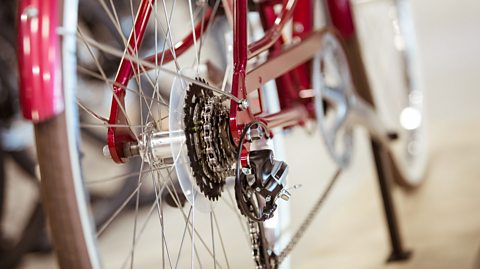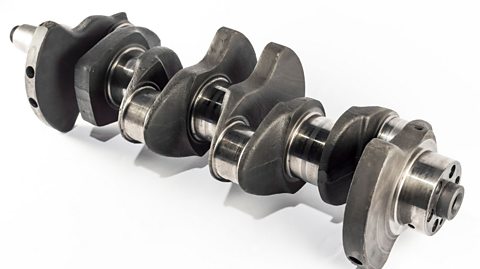Key points
- mechanical control systems use physical parts to control movement and force
- the systems approach includes input, process, and output
- examples of mechanical systems include staplers and car windows
- types of motion in mechanical devices are linear, rotary, reciprocating, and oscillating
Learn about mechanical control systems
A quick overview of mechanical control systems - including motion, pulleys, and levers
Unlike electrical control systems, a mechanical control system is made up of moving parts. However, the simple flow chart of Input, process, and output are still used to visualise how the system performs.
With mechanical control systems the input is supplied by movement, this is known as the input motion. The output also supplies a motion, this is known as a force.
A good example of a mechanical system is a bicycle. The input motion is the force of the cyclist’s feet pushing down on the pedals, which in turn causes the chain to move.
The process in this example is the chain revolving, which in turn moves the gears. This converts one type of motion into another.
The output is the wheels turning, which causes the bike to move.
When talking about a mechanical control system there are four different types of motion you have to consider.There is rotary motion. Rotary motion moves in a complete circle, for example our bike wheel.There is linear motion. Linear motion moves in a straight line, in one direction, for example a train travelling down a track.There is oscillating motion. Oscillating motion moves in a repetitive to and fro motion. For example the pendulum in a mechanical clock.Lastly there is also reciprocating motion. Reciprocating motion moves backwards and forwards along a straight line, for example a piston in an engine.
The best mechanical control systems are actually very efficient in terms of the effort input versus the output. Often using mechanical advantage to ensure that the force output from the system is greater than the input motion.Pulleys and levers are good examples of this. Pulleys and leavers are both simple mechanical control systems that can be used to move large objects.A simple single pulley system changes the direction of the force applied without adding a mechanical advantage. For example pulling down on the rope is easier than simply lifting the object up. Having no mechanical advantage means that the motion that is input will be the same as the force output.By adding another pulley to the system we can achieve a mechanical advantage. In this two pulley system the effort required to lift the object will be halved. Adding more pulleys to the system will increase mechanical advantage. This means the force output will be much greater than the effort input.
Leavers, like pulleys, use mechanical advantage to make moving a load easier.Leavers are made up of three main parts:Effort: This is the amount of force applied by the user.Fulcrum: This is the point the lever pivots around.Load: This is the weight that needs to be moved.Levers are divided into three different classes. These are all defined by that order in which the effort, fulcrum, and load are placed in.
First Class Levers: These place the fulcrum between the load and the effort. An example of this is a pair of scissors.Second Class Levers: These place the fulcrum at one end of the lever and the effort at the other. The load is placed in the middle. An example of this is a wheelbarrow.Third Class Levers: These place the effort between the fulcrum and the load. An example of this is a pair of tweezers.
Mechanical control systems use physical parts working together to control movement and force. Think of a bicycle - when you pedal (input), the chain and gears (process) make the wheel turn (output).
Other examples include door handles, wind-up toys, and pencil sharpeners.

What is the systems approach?
For mechanical systems, the systems approach can be broken into:
Input: the initial force or movement (e.g., pushing, pulling, turning)
Process: mechanisms that transfer/change the movement (e.g., gears, levers, cams)
Output: the desired result (e.g., lifting, rotating, cutting)
Examples:
- stapler: input (hand pressure) → process (lever mechanism) → output (staple insertion)
- car window: input (push switch) → process (gears) → output (window moves up/down)
What are the four types of motion
Mechanical devices all have an input motion, which transforms into force to make an output motion.
The four types of motion are:
- linear
- rotary
- reciprocating
- oscillating
Linear motion moves something in a straight line, eg a train moving down a track:
Rotary motion is where something moves around an axis or pivot point, eg a wheel:
Reciprocating motion has a repeated up and down motion or back-and-forth motion, eg a piston or pump:
Oscillating motion has a curved backwards and forwards movement that swings on an axis or pivot point, eg a swing, windscreen wipers or a clock pendulum:
Test yourself
More on Mechanical control systems
Find out more by working through a topic
- count3 of 5

- count5 of 5
